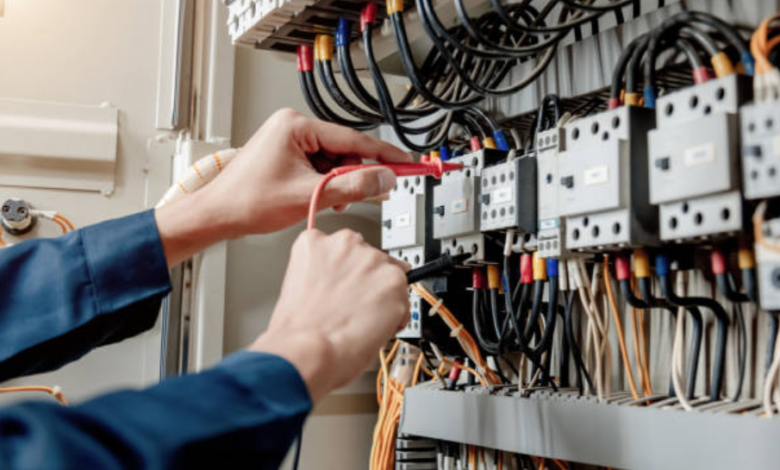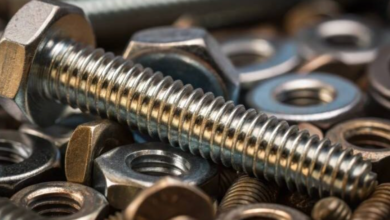How to Size a Surge Protector Correctly for Your Home or Business Infrastructure

In today electrified world, there is more danger than ever that power surges will destroy valuable equipment. That power spike can impose expensive damage or downtime on sensitive home electronics, on life-saving industrial systems and anything in between. So surge protection is not an option at all, it is a must. Nonetheless, not every surge protector is made equally, and wrong sizing may make it useless. The sizing of a surge protector is a crucial consideration in every house as well as business-related environments, and the use of a reliable source of industrial electrical equipment components can be a significant requirement when finding the appropriate working components. This guide will take you through all you should know in order to choose the appropriate surge protector according to your infrastructure.
Understanding Power Surges and Their Impact
It is important first to have a background knowledge of what a power surge is before getting into sizing. A surge is a temporary high peak in voltage which is above the normal current of electricity. These spikes may be generated by lightning, utility grid transferring, equipment drift or even big appliances turning on and off. Whereas certain surges cause fatal damage that is readily noticeable, others are not devastating but rather accumulative and highly de-performing over time on the electronic gadgets.
Surges may harm or kill TV sets, fridges, air conditioning systems, and smart appliances, and devices in the homes. Surges in the case of businesses may cause expensive equipment damage, loss of data and loss of operation time. This is particularly true in large-scale equipment facilities, and facilities with digital infrastructure. It can also be seen through the financial aspects of it: making an investment into a correctly sized surge protector is the best way to ensure long-term protection of your system and its stability. Finding a balanced alternative there comes the role of industrial electrical equipment supplies that are intended to handle a heavier load and more strenuous application demands.
Important Considerations in Determining the size of a Surge Protector
Sizing of a surge protector starts by understanding the electrical system to which the surge protector is to be applied. The surge protectors are rated according to the amount of excess voltage it can divert to ground- this is usually measured in kiloamps (kA). Probably one of the most important aspects here would be the type of service entrance; single phase, three phase, or what voltage rating on the system (120/240V, 208Y/120V, 480V, etc.).
Then what is the possible surge exposure level? This is normally grouped in three, low, moderate, and high. A rural plant vulnerable to lightning, or a building with big motors and compressors would be in the high-exposure group. Conversely, a contemporary office setup in a highly regulated city environment could only be low and medium. To be effective surge protectors should be oversized to take on the worst case scenario.
Sizing is also influenced by the place of installation. Protectors put in line at the main panel (Type 1 or Type 2 devices) may need larger surge capacity than is used in downstream subpanels or pieces of equipment. You should also keep in mind that it is necessary to put into consideration response time, clamping voltage, and energy absorption ratings. It is better to select a surge protector by taking into consideration these specifications than just striking a door and wondering which size of the lock it is.
This can be simplified by choosing to work with professionals and vendors in the line of industrial electrical equipment supplies who have the technical knowhow and system of availability of options fitting your specific system and surge threat.
See also: Harnessing the Sun: The Rise of Solar Water Pump Technology for Sustainable Agriculture
Residential Surge Protection Sizing
Residential Surge protection is normally designed to protect appliances, home networks, and smart systems. Whole-house surge protectors are mounted at the main electrical panel and are meant to dip colossal outside surges before they disperse through the house. These are commonly averaged between 20kA and 80kA based on the major size of the house and number of large appliances in use.
An average three bedroom house which has standard household appliances and electronics would be well suited by using a 40kA to 60kA surge protector. A larger capacity may be needed though, such as 80kA or more, in homes with electric vehicle charging equipment, a backup generator or home office/lab with sensitive electronics. Having support of main panel protection on top of point-of-use can be used to provide secondary protection on highly sensitive equipment such as computers or televisions.
The surge protectors also need to be in line with system configuration and voltage. As an example, a 120 / 240 V single-phase system requires a protector with specific rating to that configuration. Inappropriate voltage matching may cause a device malfunction or breakage. The safety certifications like UL 1449 makes one know that the product has gone through rigorous testing criteria and it is constructed to provide dependable long-term usage.
Selecting reliable supplies of industrial electrical equipment such as surge protectors guarantees endurance, conformity and security even at home where the threat may not be perceived as major but still raises greatly.
Surge Protection Sizes- Commercial and Industrial Applications
There are specialized needs with regards to surge protection in commercial and industrial settings. Facilities can have high horsepower machinery, complicated electric systems, sensitive automation controls all of which are susceptible to voltage spikes. In this case, surge protectors have to be designed depending on the voltage of the system, the expected load as well as the electrical equipment being utilized.
In large facilities, to protect the entire electrical distribution system, several surge protectors may be provided at various points within the distribution system: the main service entrance, subpanels and at the individual equipment location. These multi layers of protections mean that when a surge reaches one layer, it is already stopped without causing any harm. A bigger and more exposed position might require protectors as high as 100kA to 400kA.
Motor driven equipment, VFDs (variable frequency drives), CNC equipment and data servers all need specially designed protection because they are sensitive and valuable. During production or processing in factories, a short idle period because of surge damage can cost a lot in financial terms. The parameter of sizing should also consider the quantity of surge events anticipated per year as well as the presence or the absence of self-diagnosing capabilities in the protector.
Since the set-ups in the industrial systems are frequently specific, using consultants in the area of industrial electrical equipment supplies is not only convenient but also obligatory. Such vendors are available to assist you in evaluating your surge environment, determining the required capacity, and proposing that are compliant to relevant standards and are field-tested and easily fit into your infrastructure.
Best Practice on Installation, Monitoring and Maintenance
As soon as a surge protector of a correct size is chosen, it is very important to install it properly to make it effective. To avoid impedance, setup must be positioned as near as feasible to the source of power, keeping the lead length to a minimum. Placement that is incorrect can tremendously cut down the performance of the device. The other critical condition is grounding, bad grounding increases chances of residual voltage and it may jeopardize the whole protection system.
Maintenance and testing is required as well. The strongest surge protectors still have an eventual shelf life, particularly in an environment of heavy surges. Most of the latest models have indicators or alarms, which notify that the device is time to change. Regular inspections make the protectors work properly and do not lose their connections and get corroded.
The upgrade of your system or the introduction of new equipment can also alter the requirements in connection with your surge protection. It is advisable to review your protection strategy whenever you are changing infrastructure or/and expanding it. Selecting surge protection devices that are scalable, and in appropriate modules, can permit growth to meet the future needs of the organization and cut down costs in the long term.
Learning how to size a surge protector and understanding the role of reliable industrial electrical equipment supplies are fundamental to building a resilient electrical infrastructure. By choosing the appropriate device, ensuring that it is installed correctly and that it is maintained well, you safeguard your investments, minimise the downtimes to a greater extent and also provide a safer environment to all those dependent on your power system.




